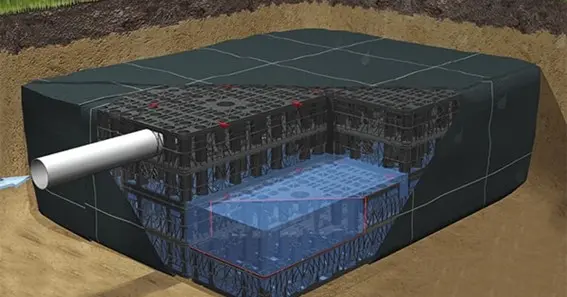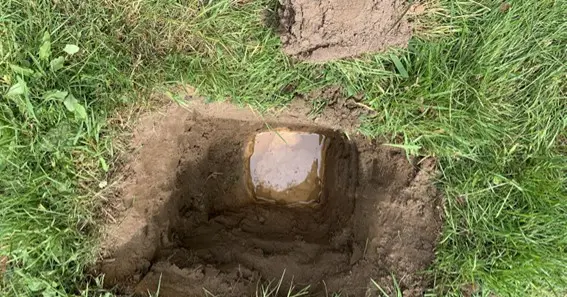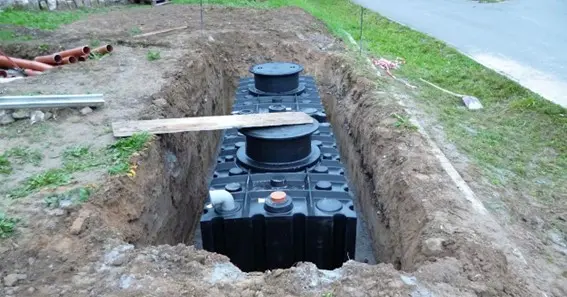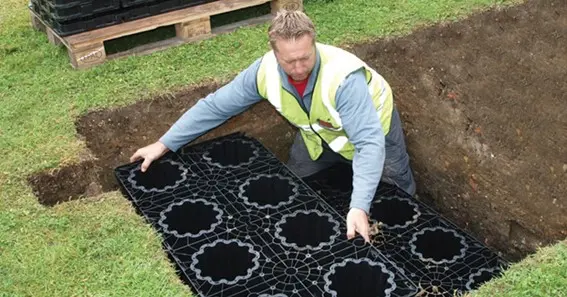Have you ever wondered how to stop rainwater from flooding your garden or driveway? That’s where a soakaway comes in handy. But what is a soakaway, and how does it work? Let’s break it down in easy-to-understand language.
What Is A Soakaway?
Understanding what is a soakaway can be simple. A soakaway is a hole in the ground filled with stones or gravel. It helps rainwater drain away from your property. Instead of water sitting on the surface and causing floods, a soakaway allows it to slowly soak into the ground.
Also Read : The Ultimate Guide To Philippine Navy Recruitment
How Does A Soakaway Work?

Explaining what is a soakaway involves looking at how it manages water:
- Collecting Water: Rainwater from your roof or driveway is collected and directed into the soakaway through pipes or drains.
- Filtering Water: As the water enters the soakaway, it passes through the stones or gravel. This helps to remove any dirt or debris.
- Soaking In: The filtered water then slowly seeps into the surrounding soil, reducing the risk of flooding.
Also Read : What Is A Magic Coffee: Exploring The Trendy Beverage
Why Is A Soakaway Important?
Defining what is a soakaway highlights its importance for several reasons:
- Preventing Floods: Soakaways help stop your garden or driveway from flooding after heavy rain.
- Helping the Environment: Soakaways allow water to soak into the ground, which helps maintain the natural water cycle.
- Protecting Your Home: By managing rainwater, soakaways help prevent water damage to your house and property.
Types Of Soakaways

There are different types of soakaways to suit various needs:
- Simple Soakaway Pit: A basic hole filled with gravel or stones. It’s great for small gardens.
- Modular Soakaway Systems: Made from special crates or units, these are more efficient and can handle more water, ideal for larger properties.
- Infiltration Trenches: Long trenches filled with gravel, used for draining larger areas like fields or car parks.
Installing A Soakaway: What You Need To Know
If you’re thinking about installing a soakaway, here are some key points to consider:
- Soil Type: Soakaways work best in sandy or gravelly soil. If your soil is clay, you might need extra help.
- Location: Place your soakaway at least 5 meters away from your house to avoid water damage.
- Size: The soakaway should be big enough to handle the amount of water that needs to drain away.
Step-By-Step Guide To Installing A Soakaway
- Planning: The first step in installing a soakaway is to plan its location and size. Measure the area you need to drain and check the soil type. This will help you determine the best place for your soakaway.
- Digging the Pit: Once you have your plan, you can start digging the pit for the soakaway. The depth and width will depend on how much water you need to manage.
- Filling the Pit: After digging the pit, fill it with gravel or stones. This will help filter the water and allow it to soak into the ground.
- Connecting Drains: Next, connect the drain pipes from your roof or driveway to the soakaway. Make sure they are secure and properly aligned.
- Covering the Soakaway: Finally, cover the top of the soakaway with a layer of soil and grass. This will help it blend in with your garden and prevent debris from entering.
Maintaining Your Soakaway
To keep your soakaway working well, follow these simple tips:
- Clear Debris: Keep gutters and drains free from leaves and dirt.
- Regular Checks: Look at your soakaway now and then to make sure it’s not blocked.
- Get Help if Needed: If you notice problems, ask a professional for advice.
Benefits Of Having A Soakaway

Understanding what is a soakaway helps us appreciate its benefits:
- Cost-Effective: Soakaways are a cost-effective solution for managing rainwater.
- Easy to Install: With a bit of planning, installing a soakaway can be a straightforward DIY project.
- Environmentally Friendly: Soakaways promote the natural infiltration of water, which supports the local ecosystem.
Common Issues With Soakaways
While soakaways are generally low-maintenance, there can be some common issues:
- Clogging: Debris can clog the soakaway, preventing water from draining properly. Regular maintenance can help prevent this.
- Overflow: If the soakaway is too small, it can overflow during heavy rain. Make sure your soakaway is sized correctly for your needs.
- Soil Conditions: Poor soil conditions, like heavy clay, can affect the soakaway’s performance. In such cases, additional measures may be needed.
Professional Help With Soakaways
If you’re unsure about installing or maintaining a soakaway, it’s a good idea to seek professional help. A professional can assess your property, recommend the best type of soakaway, and ensure it’s installed correctly. They can also provide ongoing maintenance to keep it working efficiently.
Conclusion
So, what is a soakaway? It’s a simple yet effective way to manage rainwater and prevent flooding around your home. By understanding what is a soakaway and how it works, you can keep your property safe and dry. Whether you have a small garden or a large area, knowing what a soakaway does and its purpose can be a valuable addition to your drainage system. With proper installation and maintenance, a soakaway can help you manage water effectively, protect your property, and support the environment.
FAQ
What Is A Soakaway And How Does It Work?
A soakaway is a pit filled with gravel or stones designed to manage rainwater. It collects rainwater from surfaces like roofs and driveways, filters out debris, and allows the water to slowly soak into the surrounding soil. This helps prevent flooding and waterlogging in your garden or driveway.
Why Do I Need A Soakaway?
You need a soakaway to effectively manage rainwater and prevent flooding. By directing rainwater into the ground, a soakaway helps keep your property dry and protects it from water damage. It also supports the natural water cycle by allowing water to infiltrate the soil.
How Do I Know If My Soil Is Suitable For A Soakaway?
Soakaways work best in sandy or gravelly soil, which allows water to drain easily. If your soil is clay or very compact, water might not soak in as effectively. You can perform a simple soil test by digging a small hole, filling it with water, and observing how quickly it drains. If it drains within a few hours, your soil is suitable for a soakaway.
How Large Should A Soakaway Be?
The size of a soakaway depends on the area you need to drain and the amount of rainfall in your region. A general guideline is that the soakaway should be able to handle the volume of water from a 1-in-10-year storm event. For a typical residential property, a soakaway pit might be around 1 cubic meter. However, larger properties or areas with heavy rainfall may require a larger soakaway.
How Can I Maintain My Soakaway?
To keep your soakaway functioning properly, follow these maintenance tips:
- Clear Debris: Regularly clean gutters and drains to prevent leaves and dirt from clogging the soakaway.
- Inspect Periodically: Check the soakaway for blockages and ensure water is draining properly.
- Professional Help: If you encounter persistent issues, seek advice from a professional to ensure your soakaway is working efficiently.
